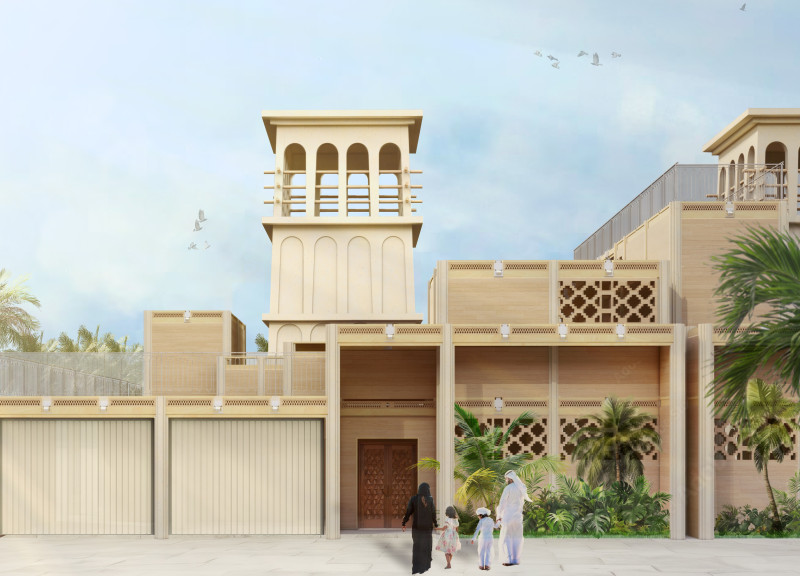5 key facts about this project
The project embodies a commitment to enhancing the user experience while addressing environmental considerations. Its primary function is to serve as a multi-use space that caters to both communal and individual needs. The design encourages collaboration and interaction, creating an environment conducive to social engagement. Central to its concept is the idea of flexibility; the spaces are designed to adapt to various activities, enabling a dynamic use throughout different times of day or events.
The important parts of this architectural project include its thoughtful zoning, which carefully delineates private and public areas while allowing for seamless transition between the two. Community-centric spaces, such as gathering areas, are strategically located to invite participation and foster a sense of belonging. These areas are complemented by service zones, which support the primary functions without intruding on the user experience.
Materiality plays a crucial role in the overall composition and perception of the space. The use of natural materials such as locally sourced timber and stone not only aligns with the project’s sustainable ethos but also contributes warmth and texture to the design. The careful selection of materials extends beyond aesthetics; it reflects an intention to minimize environmental impact while enhancing the building's longevity and maintenance requirements. Glass is also prominently featured, serving to create visual connections both internally and externally, while maximizing natural light within the structure. This blend of materials reinforces the architectural language, enabling the building to harmonize with its surroundings.
The design uniquely addresses the relationship between the internal and external environments. Expansive windows and terraces blur the boundaries, inviting the landscape in while providing occupants with unobstructed views of [geographical features or urban elements]. This thoughtful engagement with the surroundings encourages occupants to appreciate the natural ecological context, further promoting a sustainable lifestyle.
In terms of unique design approaches, the project showcases a rhythmic façade that responds to the changing light throughout the day. Sun shading devices or louvres are integrated into the design to optimize energy efficiency while providing comfort to the occupants. The balancing of openness and privacy is also noteworthy, achieved through sculptural walls that define spaces without enclosing them, allowing for a fluid interaction with light and air.
The overall architectural composition reflects a well-considered approach toward creating an inviting, flexible, and environmentally conscious space. By prioritizing functionality and user experience, the project stands as a testament to modern architectural principles and the importance of community in contemporary design.
To gain a comprehensive understanding of the project, including its architectural plans, sections, and various architectural ideas, readers are encouraged to explore the detailed presentation. This exploration will unveil the nuances that make this project a valuable contribution to the field of architecture and an exemplar of thoughtful design.


























